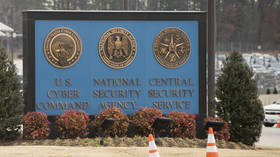US threat perception report: Russia and China dominate Washington’s mindset

A top US intelligence official has expressed concern that the Chinese government – under its powerful President Xi Jinping, who started his historic third term this week – could emerge as the most potent force on the global stage in alliance with Russia to weaken Washington’s influence.
Earlier this week, Avril Haines, the director of national intelligence in the administration of US President Joe Biden, appeared before a Senate committee to present the annual threat assessment report.
Asia Editor Joydeep Sen Gupta decodes the key pressure points of the report, which identifies Beijing as a ‘near-peer competitor’ in a changing world order,
Dual threat perceptions
The report dwells on China-Russia bonhomie as one of the high points of the annual review, which seldom gets a makeover from year to year.
Significantly, the section on China is much more elaborate this year than in recent times.
It reinforces the Biden administration’s growing focus on Asia’s biggest economy, which is seen as punching above its weight in its bid to challenge the US’ military might.
The report makes reference to China’s “capability to directly attempt to alter the rules-based global order in every realm and across multiple regions,” while acknowledging Beijing’s exalted status.
The report identifies Beijing as a “near-peer competitor” for its ability to threaten its neighbors (read India).
Simultaneously, it takes note of Russia’s “unprovoked full-scale invasion of Ukraine” that “has emerged as a defining characteristic of the current era.”
The China-Russia axis is the biggest cause for concern for Washington because of “their shared threat perceptions of the US” in diverse fields largely pertaining to defense and security.
A “tectonic event”
Haines singles out the Ukraine conflict “as a tectonic event that is reshaping Moscow’s relationships with the West and China,” and warns of potential conflict between Russia and the West that may lead to dire consequences.
However, the report strikes a contradictory note when it cites Moscow’s dwindling influence because of a “range of constraints,” despite noting its prowess in military, security, malign influence, cyber, and intelligence tools.
Russia’s global power play
Russia’s interests in the oil-and-natural resources-rich Middle East and North Africa (MENA) region for “military access rights and economic opportunities” at Washington’s expense finds special mention.
It also names the Central African Republic, Libya, Mali, and Syria in the Levant, where Russia “will present itself as an indispensable mediator and security partner.”
It predicts that both Russia and Iran will improve their “bilateral economic and defense cooperation” in a bid to circumvent Western sanctions.
Similarly, it rings alarm bells regarding Russia’s overtures in Latin America in “countries that Moscow sees as key players or close partners, including Argentina, Brazil, Cuba, Nicaragua, and Venezuela” to amplify its influence.
“Russia will continue to use energy as a foreign policy tool to try to coerce cooperation and weaken Western unity on Ukraine,” the report says.
But the sanctions have proved to be a dampener.
China’s expansionist ambitions
The focal point of the report is China’s strengthening of its military and its expanded operations in the Indo-Pacific region, which is being countered by a grouping consisting of the US, Japan, Australia, and India known as the Quad.
A substantial part of the report is devoted to the Chinese Communist regime’s efforts to press Taiwan on unification and whether Beijing will attack the island nation.
The Chinese military, according to the report, is working towards meeting Xi’s goal – to become powerful enough by 2027 to ward off any US-led intervention in the event of an armed conflict over Taiwan.
It warns that China will avoid signing nuclear arms agreements with either the US or Russia because of an inadequate arsenal that needs to be modernized.
The subcontinent imbroglio
The Indian subcontinent remains a major flashpoint for geostrategic tensions. According to the report, Sino-Indian ties will remain strained in light of prolonged border disputes, which led to a war in 1962 and several skirmishes in the recent past.
The report cites the lethal clash at Galwan in eastern Ladakh in 2020, where at least 20 Indian soldiers lost their lives in hand-to-hand combat, as an example of Sino-Indian conflict.
It calls for Washington’s intervention to resolve the dispute amid increasingly warm ties between India and the US.
Similarly, the continuing hostilities between arch-rivals India and Pakistan are of particular concern “because of the risk of an escalatory cycle between two nuclear-armed states.”
As of now, an uneasy calm prevails along the Line of Control following a 2021 ceasefire.
But the report warns that Pakistan is known to harbor non-state actors – Islamist militants – which could lead to an armed conflict given New Delhi’s intolerance of cross-border terrorism.
Under the leadership of Prime Minister Narendra Modi, India is likely to respond with military force to perceived or real Pakistani provocations.
Climate action
Beijing and New Delhi will play critical roles in determining a response to any temperature rises, amid a raging global debate over climate change, the report notes.
China and India are the largest and third-largest carbon emitting countries, respectively, whose per capita emissions are growing each year.
The document urges the US to seek Beijing and New Delhi’s assistance in finding a lasting solution to the climate change issue.
















